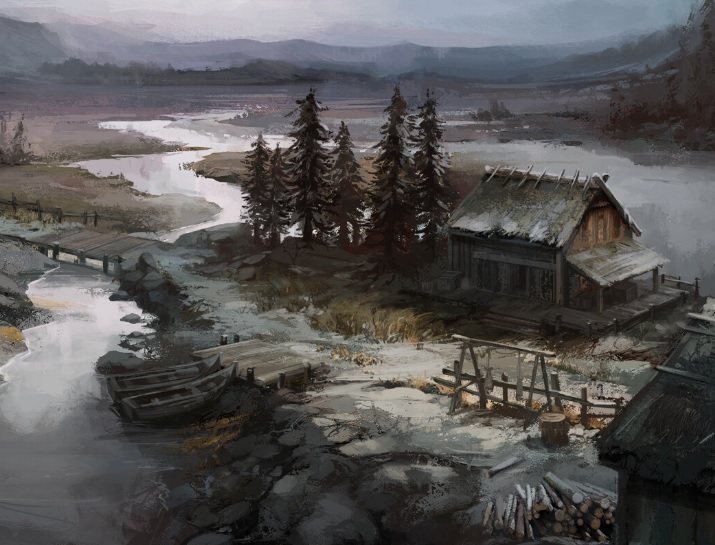Difference between revisions of "Land Clearance"
Tao alexis (talk | contribs) (Created page with "'''Land Clearance''' describes the labour-intensive practice of readying hinterland for cultivation, as carried out by homesteaders wishing to farm. With the b...") |
Tao alexis (talk | contribs) |
||
| Line 1: | Line 1: | ||
| + | [[File:Land Clearance.jpg|right|560px|thumb]] | ||
'''Land Clearance''' describes the labour-intensive practice of readying [[Hinterland|hinterland]] for cultivation, as carried out by homesteaders wishing to farm. With the barest of tools available in the medieval-Renaissance period, the effort was enormous. It could take as much as a decade, and even more, to fully clear a piece of land — given that it was necessary, for survival, to cultivate some small part of it as soon as possible. Thus the land would be readied piecemeal, season after season, while sufficient food had to be grubbed from a poor soil until it was repeatedly turned over and made sustainable. | '''Land Clearance''' describes the labour-intensive practice of readying [[Hinterland|hinterland]] for cultivation, as carried out by homesteaders wishing to farm. With the barest of tools available in the medieval-Renaissance period, the effort was enormous. It could take as much as a decade, and even more, to fully clear a piece of land — given that it was necessary, for survival, to cultivate some small part of it as soon as possible. Thus the land would be readied piecemeal, season after season, while sufficient food had to be grubbed from a poor soil until it was repeatedly turned over and made sustainable. | ||
__TOC__ | __TOC__ | ||
Revision as of 18:13, 2 September 2023
Land Clearance describes the labour-intensive practice of readying hinterland for cultivation, as carried out by homesteaders wishing to farm. With the barest of tools available in the medieval-Renaissance period, the effort was enormous. It could take as much as a decade, and even more, to fully clear a piece of land — given that it was necessary, for survival, to cultivate some small part of it as soon as possible. Thus the land would be readied piecemeal, season after season, while sufficient food had to be grubbed from a poor soil until it was repeatedly turned over and made sustainable.
Contents
The best method for undertaking this work was as part of a larger community, comprised of many homesteaders working together, or as a venture supported and carried forth by a monastical order or migrating clan. This allowed the sharing of heavy lifting, cutting, digging and ploughing, with the limited technology available to the time period. With many hands working together, the business of felling trees, removing stumps, clearing large stones, building walls and constructing a joint storage building, like a garner, could be accomplished in order of their importance. A single family, comparatively, might put up was an area of brush or an inconvenient stump for years until the time and the necessary labour (as children reached maturity) could be applied.
These rough-hewn farmlands occur in type-7 hexes, as a work in progress. While the first few years enables a small degree of production, it's understood that the meagre population is yet able to produce a meaningful surplus each year, which is used to pay taxes and purchase materials to support further development. As the land improves, and population rises, harvests keep pace as the locale gradually transforms into a "type-6" hex — producing the same amount of surplus, but supporting a larger, more stable community.
